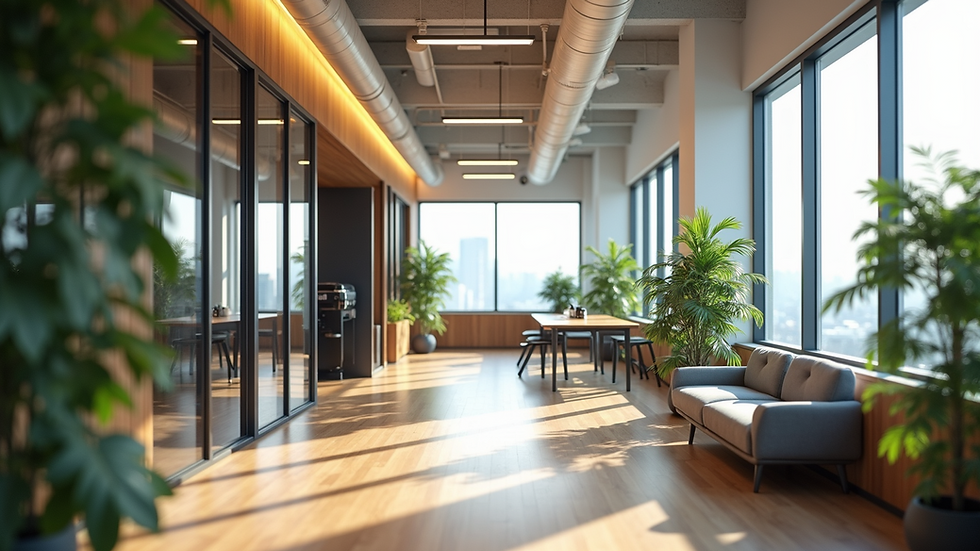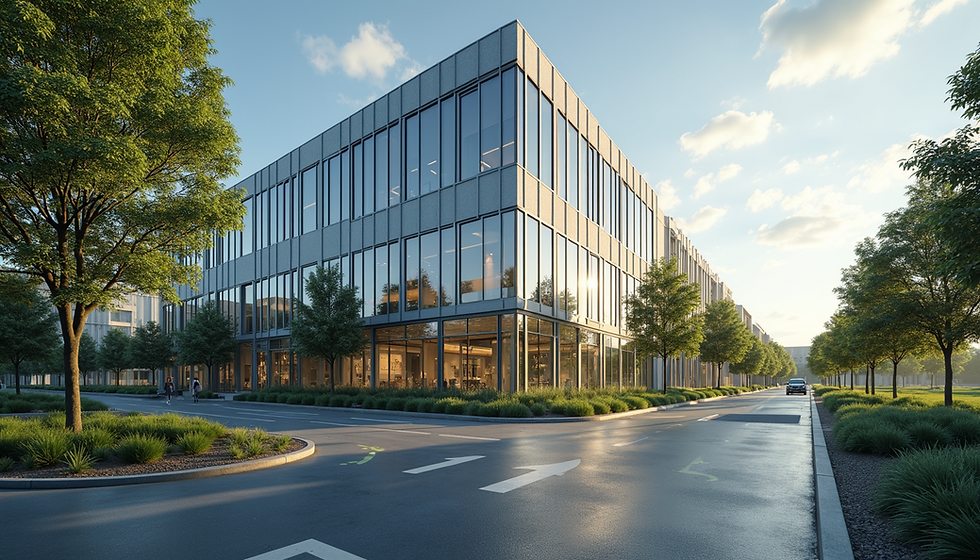Design & Fit-Outs: Exploring Trends and Innovative Practices in the Construction Industry
- Jul 22, 2025
- 4 min read
In the ever-evolving construction industry, design and fit-outs play a crucial role in transforming spaces. From commercial offices to residential properties, how these spaces are designed and fitted out can significantly impact their functionality and aesthetic appeal. As we delve into the latest trends and innovative practices in design and fit-outs, we will explore real-world case studies and actionable insights that professionals can adopt.
Key Trends in Design and Fit-Outs
As we look toward the future, several key trends have emerged in the design and fit-out sector. These trends reflect the changing preferences of occupants and the shift toward sustainability and technology.
One of the most significant trends is the focus on sustainability. With an increasing awareness of climate change, more construction projects are incorporating eco-friendly materials and energy-efficient systems. For instance, using recycled materials and sustainable wood can reduce the overall environmental impact. As a result, businesses are seeing higher levels of employee satisfaction and lower operating costs, proving that sustainable designs yield long-term benefits.

Innovative Practices in Fit-Outs
The fit-out process has also seen innovative practices that not only enhance aesthetics but also optimize functionality. For example, open-plan designs have gained popularity in office spaces, promoting collaboration and communication among employees.
Another noteworthy practice is the use of modular systems. These systems allow for adaptability and flexibility, accommodating future changes without having to undergo extensive renovations. A modular fit-out approach lets businesses rearrange their spaces to meet evolving demands, which is especially beneficial for startups and companies experiencing rapid growth.

Case Studies: Successful Design and Fit-Out Projects
To better understand the impact of these trends and practices, let's analyze some exemplary design and fit-out projects that highlight innovative approaches in the construction industry.
Case Study 1: Tech Office Transformation
A tech company in San Francisco underwent a significant fit-out to create a collaborative workspace. They incorporated various zones, including quiet areas, open brainstorming spaces, and relaxed lounges. Using sustainable materials, the office not only improved employee productivity but also attracted new talent, showcasing how design can directly influence a company's success.
Case Study 2: Retail Space Revamp
A well-known retail brand revamped its store layout by transitioning to a modular design. This approach allowed them to quickly adapt to seasonal inventory changes and promotions. The result was a flexible shopping experience that drew more foot traffic and boosted sales by 20% during peak shopping seasons.

Emphasizing Health and Well-being
The increasing emphasis on employee well-being has led to interior spaces designed for comfort and health. Concepts like biophilic design, which integrates natural elements into the built environment, have gained traction. This trend includes the use of plant life, natural light, and ventilation systems that improve air quality.
Designers are also focusing on ergonomic furniture that promotes good posture and reduces fatigue. By prioritizing health and well-being through design choices, organizations can foster a happier and more productive workforce.
Adaptation to Remote Work Trends
The pandemic has transformed how we work. Many organizations have opted for hybrid models, balancing in-office and remote work. As a result, fit-outs are accommodating these changes by providing versatile spaces that can serve various functions - from collaborative meeting rooms to private workspaces.
Embracing technology has also become integral in this transition. Smart office solutions, such as occupancy sensors and automated lighting, ensure spaces are utilized efficiently, adapting to the needs of the workforce, whether they are present or working remotely.
The Future of Design and Fit-Outs
Looking ahead, we can anticipate further advancements driven by technology and sustainability. Virtual reality (VR) and augmented reality (AR) are paving the way for innovative design possibilities. They allow designers and clients to visualize spaces before construction begins, ensuring alignment and satisfaction with the end product.
Moreover, the trend toward sustainable fit-outs will only grow. The construction industry will likely see a surge in demand for circular economy practices, where materials are reused and recycled rather than disposed of. This shift not only benefits the environment but also presents an enormous opportunity for businesses to stand out and attract eco-conscious clients.
Actionable Recommendations
For professionals in the construction industry, embracing these trends can lead to successful outcomes. Here are some actionable recommendations for integrating innovative design and fit-out practices into your projects:
Invest in Sustainable Materials: Seek out suppliers who provide eco-friendly and sustainable materials. This will not only enhance your projects but can also attract environmentally conscious clients.
Incorporate Flexibility into Design: Utilize modular systems that can easily adapt to changing needs. This will ensure your designs remain relevant and functional over time.
Focus on Health and Well-being: Prioritize elements that contribute to employee well-being. Invest in ergonomic furniture and incorporate natural light and plants.
Leverage Technology: Embrace smart technology and tools that enhance workflow and efficiency. This includes using VR for design visualization and smart systems for energy management.
Stay Informed on Trends: Regularly attend industry conferences, webinars, and workshops. Staying updated on emerging trends and practices will keep your designs innovative and competitive.
By integrating these practices into your design and fit-out projects, you can create spaces that are not only aesthetically pleasing but also functional and sustainable.
Looking Forward
As we reflect on the current landscape of design and fit-outs in the construction industry, it is evident that change is constant. Embracing innovative practices and staying aligned with emerging trends will empower professionals to craft spaces that meet the evolving needs of society. Whether focusing on sustainability, health, or technology, the future of design holds exciting possibilities for those willing to adapt and thrive.







I love when a font can make a design look premium without overdoing it. The Exclusive font does just that. It’s minimal yet stylish, perfect for branding or presentations where you want to suggest high quality and refinement. I used exclusive fonts for a fashion concept and it gave everything a clean, upscale look. It’s subtle, but the kind of font that really upgrades your whole project.